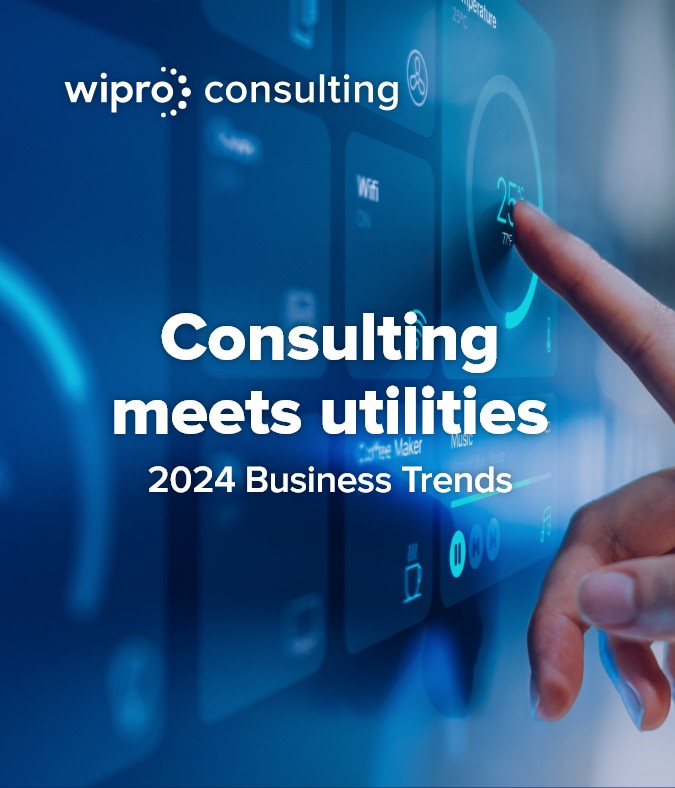These Tech Trends Will Reshape the Utilities Industry in 2024
The utilities industry is experiencing a fundamental shift driven by aging infrastructure, significant technology advancements, and growing demand for alternative energy sources. The recent geopolitical instability in Europe and the subsequent energy crisis have emphasized the critical importance of both energy sovereignty and a stable supply. In 2024, the convergence of these forces and events will continue to create challenges and new opportunities for utilities companies. The following technology trends can help enterprises address the challenges and seize the possibilities, and should be critical considerations in strategic agendas in 2024 and beyond.
1. Preparing for the energy transition with AI
The utilities industry is becoming increasingly data-driven. Some utilities already use AI/ML to enhance predictive asset maintenance, supply and demand forecasting, and automated data collection/summarization. GenAI advancements will enhance those capabilities further.
It’s no secret that the coming energy transition will require modernizing legacy infrastructure and enabling intelligent grids, peer-to-peer energy exchanges, and microgrids. AI will play a role in each of those imperatives. AI will also help companies optimize energy transfers and asset management while minimizing loss and other inefficiencies, contributing to sustainability gains. In the near term, utilities should focus on building the AI-driven data processing capabilities necessary to manage a transformed grid and leverage the scalable cloud capabilities to build a solid and sustainable foundation for future digital programs.
2. Enabling new operating models with smart meters, grids, and connected assets
Smart meters, agile grids, and connected assets will be critical to the energy transition and will play a significant role in the integration of alternative energy sources. Localized energy generation and peer-to-peer marketplaces will continue to need the support of reliable, centralized energy sources, and utilities companies will need to update their systems to account for more flexibility in supply and demand. Smart meters, smart grids, and connected assets will work together to provide real-time insights on usage and allow companies to optimize distribution (less waste, more reliability through enhanced forecasting) and integrate distributed energy resources more effectively. With smart grid and smart metering deployment accelerating in many geographies (particularly in Europe), utilities have an opportunity to update their operating models to fully leverage the capabilities of these agile new technologies to advance both affordability and sustainability. Meanwhile, connected generation and T&D assets will continue to help utilities enhance grid visibility, improve reliability, economize maintenance, and enable prosumers (energy producers and consumers) to better participate in flexibility and demand-response programs.
3. Building customer experiences and business models amid decentralization
As utilities pave the way for the energy transition, they face numerous questions about future customer experiences and business models. The emerging Utilities 3.0 era will displace traditional business models in the utilities industry, particularly in deregulated markets. Energy suppliers must diversify by providing energy services such as aggregation, energy advice, and energy infrastructure services rather than just selling energy as a commodity. Centralized electricity generators may need to equip themselves with new technologies that enable them to sell on decentralized energy marketplaces and rapidly identify and leverage new trading platforms as they emerge. Web3 technologies like blockchain-based smart contracts will help utilities serve customers and preserve their market position in a more decentralized energy marketplace.
In 2024, as the world emerges from the energy crisis and turns its focus squarely on sustainability and the energy transition, utilities will have numerous opportunities to gain a deeper understanding of consumer needs and preferences and focus on providing a digitalized and connected experience aligned with consumer personas, analytics-based insights, and end-to-end digitalized interactions across energy and energy services. Utilities will advance energy management and smart home solutions, further define their role in the EV charging ecosystem, enable consumers to better manage their usage and participate in demand-response programs, and provide new clean and sustainable energy options.
As consumers begin to play a greater role in energy generation and distribution, connected assets will likely become a new revenue stream for utilities providers. Companies should already be considering business models that involve selling equipment and support services to prosumers to help prosumers establish, manage, and monetize their own energy systems.
4. Refining cloud capabilities with industry clouds
Industry clouds are verticalized offerings tailored to the specific needs of an industry, coupled with the advantages of cloud computing. The approach offers pre-built applications, templates, data models, and processes based on critical industry considerations such as regulatory requirements and complex infrastructure management procedures. Utilities industry clouds allow companies to deploy new solutions and services quickly, respond to industry changes and market conditions, and adapt to customer needs.
Many utilities are already utilizing industry clouds as they seek to accelerate digital transformation. As they standardize functionalities and data, utilities can pave the way for an ecosystem of cloud services that will advance new, more distributed operating models. However, to derive the maximum benefits from these industry clouds, utilities need to continue reimagining and streamlining their legacy business processes to make them more customer-centric, automated, and agile. As they review their legacy application landscape, utilities will need to identify and retain the system capabilities that provide differentiation (customer engagement, products, pricing, etc.) while utilizing the capabilities of industry clouds to optimize standardized capabilities such as billing, metering, and market data exchange.
The energy transition is accelerating, but it will be several decades before the utilities industry approaches anything close to a steady-state business model and operational landscape. Not all current business models are guaranteed to survive, but industry leaders can view that reality as an exciting opportunity to invest in the data and technology tools that will reveal new horizons of innovation and efficiency. The utilities that are equally data-driven and inventive will be the winners in an increasingly decentralized future.
 Locations
Locations




